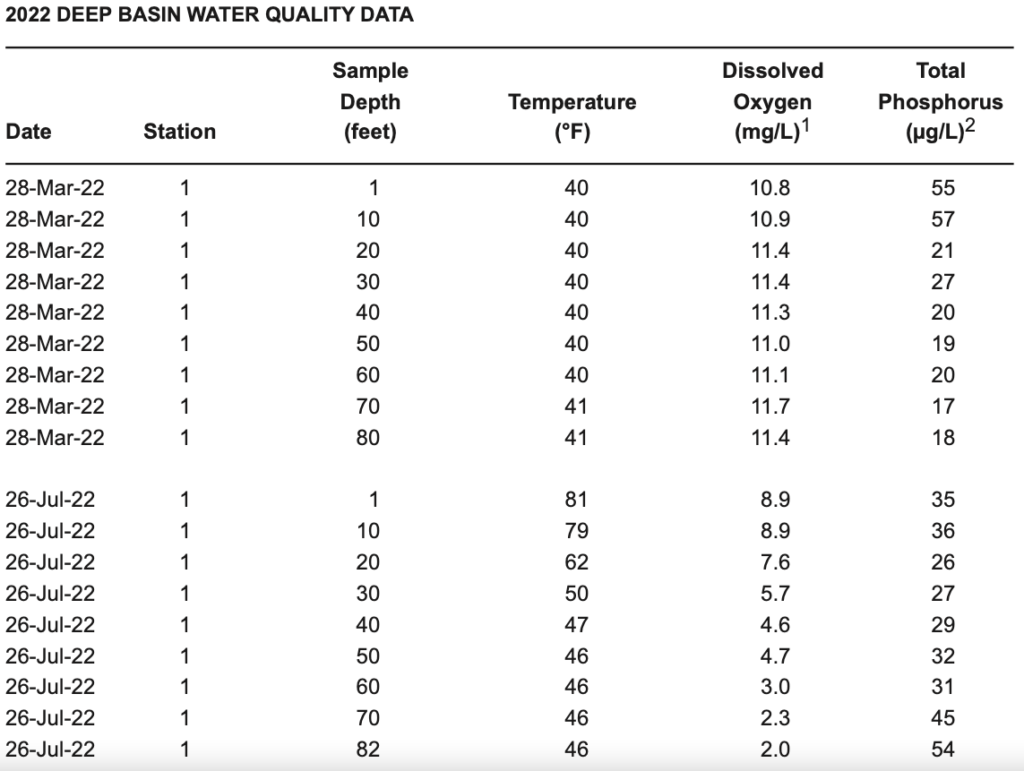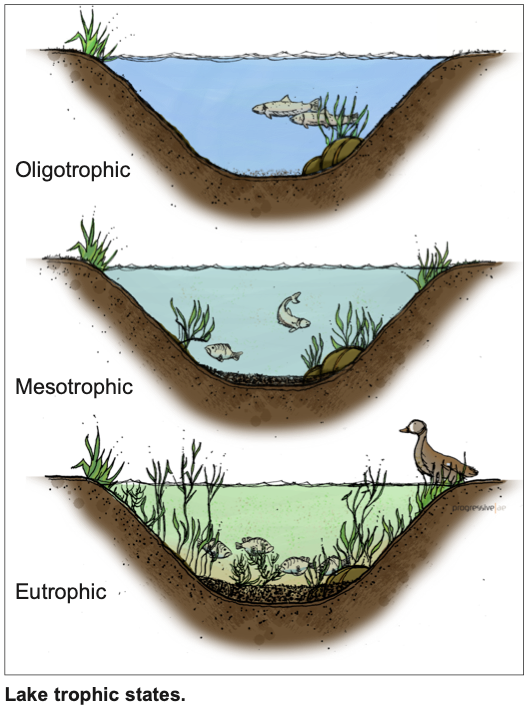2022 Water Quality Monitoring Report
As part of the ongoing work of the Miner Lake Improvement Board, we contract with Progressive AE to assess and report on the overall water quality and vegetation present in Miner Lake.
The specialists from Progressive AE visit the lake at least twice each year and perform a series of tests and observations and compile a report for our review. Below is the summary finding as well as the supporting documents at the bottom of the page.
Summary Information
Overall water clarity in 2022 was lower than in previous years and phosphorus levels remain fairly high, especially in the July reading.
Miner Lake is meso-eutrophic. That is, the lake exhibits phosphorus concentrations in the eutrophic range, but has moderate chlorophyll-a concentrations and moderate clarity.
See explanation of lake classifications and tropic states in section below.


Lake Classifications and Tropic States
Lakes can be classified into three broad categories based on their productivity or ability to support plant and animal life. The three basic lake classifications are oligotrophic, mesotrophic, and eutrophic.
Oligotrophic lakes are generally deep and clear with little aquatic plant growth. These lakes maintain sufficient dissolved oxygen in the cool, deep bottom waters during late summer to support cold water fish such as trout and whitefish.
Eutrophic lakes have poor clarity, and support abundant aquatic plant growth. In deep eutrophic lakes, the cool bottom waters usually contain little or no dissolved oxygen. Therefore, these lakes can only support warm water fish such as bass and pike.
Lakes that fall between the two extremes of oligotrophic and eutrophic are called mesotrophic lakes.
Under natural conditions, most lakes will ultimately evolve to a eutrophic state as they gradually fill with sediment and organic matter transported to the lake from the surrounding watershed. As the lake becomes shallower, the process accelerates. When aquatic plants become abundant, the lake slowly begins to fill in as sediment and decaying plant matter accumulate on the lake bottom. Eventually, terrestrial plants become established and the lake is transformed to a marshland. The natural lake aging process can be greatly accelerated if excessive amounts of sediment and nutrients (which stimulate aquatic plant growth) enter the lake from the surrounding watershed. Because these added inputs are usually associated with human activity, this accelerated lake aging process is often referred to as cultural eutrophication..
Here are the individual reports for your review:
2022 Miner Lake Water Quality Data
Lake Water Quality – General Document
If you have questions or comments, please use the comments section below.


Denise
May 29, 2023
Hi Sam! I live on the channel of Forrest Dr. I wanted to know when they will be spraying for the weeds? I have a jet ski and they are out of control and if I ride it, it’s going to suck them in and I will have to take it to the shop to fix it. I lost the whole month of May due to the algae and weeds. Me and a couple of the neighbors have been trying to rake it up ourselves. We have piles and piles of weeds. We pay a lot of money to live here and we shouldn’t have to do that. I lost all May for riding due to the weeds. I heard they were going to spray at the end of May then I heard June and then I heard not at all, so I just was curious on when they are spraying. I was also curious on why the channel does not get taken care of? We had this issue last year too. Thank you! Denise
Sam Martin, Pres. MLPOA
June 29, 2023
Denise –
I did not see your comment in the holding queue (first-time needs approval to prevent spam…).
We have been working to address weeds throughout the lake and are aware of the accumulation that often occurs in portions of the channels. The Miner Lake Improvement Board is authorized to address invasive plants such as Eurasian Millfoil and Starry Stonewort. The treatments beginning in 2021 have been making an significant impact on those plants, but the starry stonewort has required additional treatment.
The association is not authorized to do any other treatment modification to the channels (or other areas of the lake).
I’d be happy to talk with you further and understand what plants or other issues you’re experiencing. One thing we know is that the channels, and other shallow areas, are unfortunately more susceptible to the effects of over nourished plants from septic run-off and our lack of a sewer. That is why we are continuing our effort to get that project completed. [very close to submitting the delayed USDA grant application]